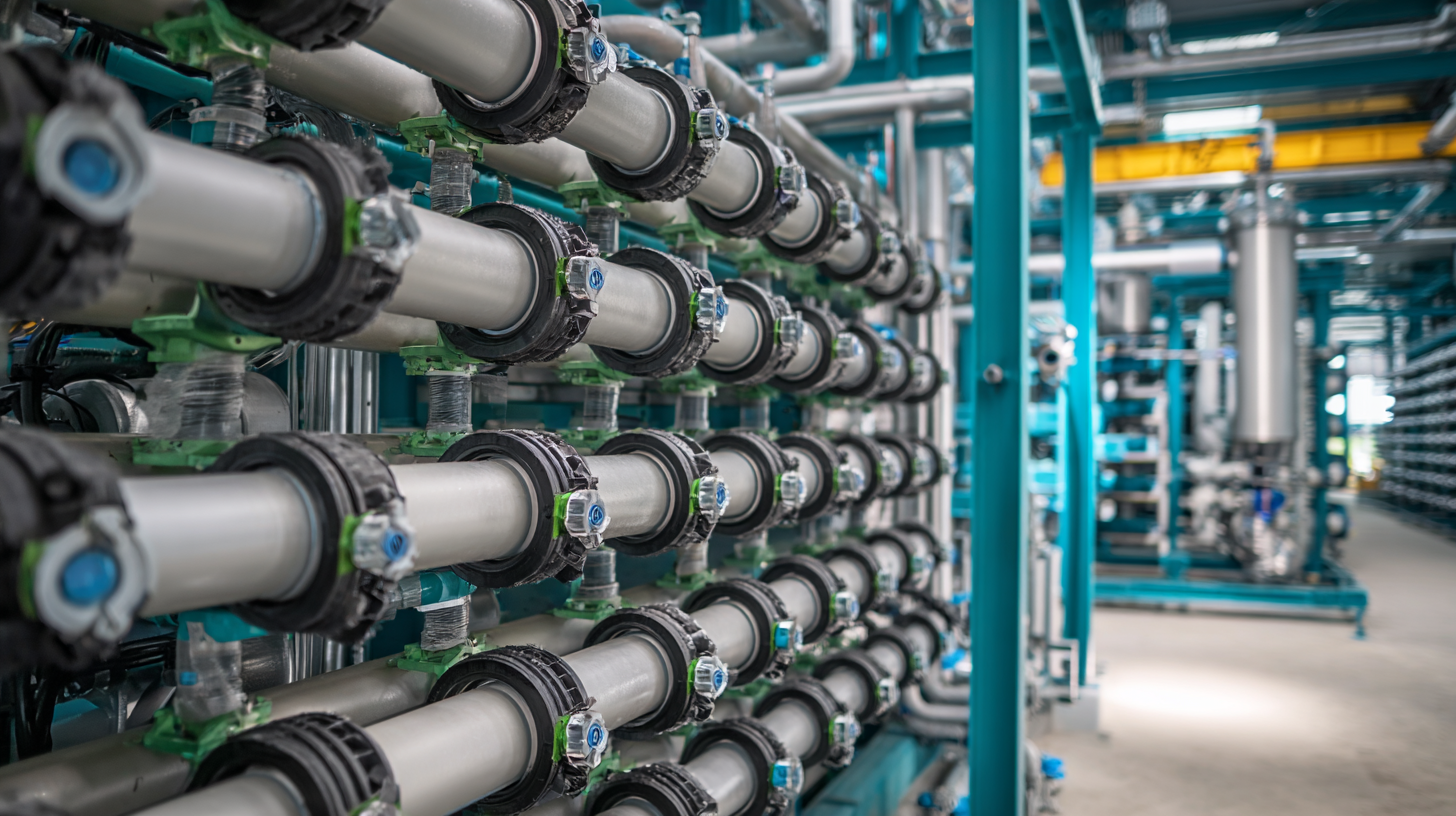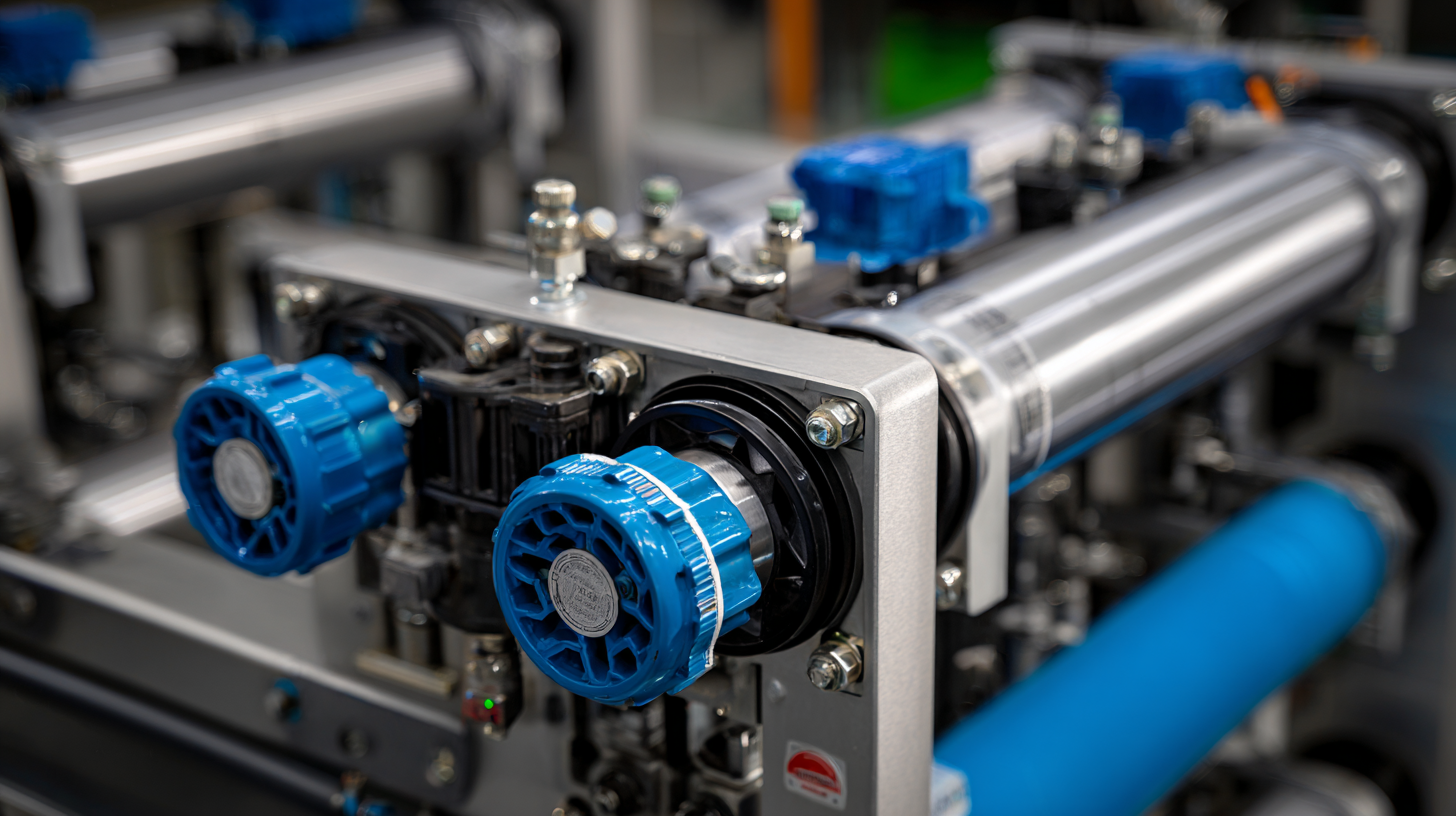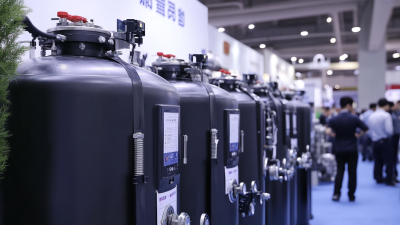Leave Your Message
Request a Quote
The increasing global demand for clean and safe drinking water has intensified the need for innovative water treatment technologies. Among these, the Nanofiltration Filter stands out as a pivotal solution that bridges the gap between conventional filtration methods and advanced treatment processes. According to a report by MarketsandMarkets, the global water treatment market is expected to grow from $532.2 billion in 2020 to $693.3 billion by 2025, with membrane filtration technologies, including nanofiltration, projected to be a key driving force.

Nanofiltration Filters effectively remove divalent and multivalent ions, organic molecules, and certain pathogens, making them particularly valuable in industrial processes and municipal water treatment systems. As regulations become stricter and the focus on sustainability increases, understanding the role of Nanofiltration Filters in modern water treatment solutions is essential for ensuring water quality and conservation efforts.
Nanofiltration (NF) has emerged as a vital process in modern water treatment solutions by effectively removing dissolved organic matter, divalent ions, and larger monovalent ions, while allowing essential minerals to pass through. This selective membrane filtration technology operates at pressures between 5 and 30 bar, considerably lower than reverse osmosis, making it an energy-efficient option. According to a report by the International Water Association, NF systems can achieve over 90% rejection of harmful contaminants while maintaining a high permeate flux of up to 40 liters per hour per square meter.
The science behind nanofiltration involves membranes with pore sizes typically ranging from 1 to 10 nanometers. This unique structure grants NF the capability to differentiate between various substances based on size and charge. For instance, NF can effectively separate sulfate from drinking water, helping to mitigate issues related to mineral imbalance. In fact, the Global Water Intelligence report states that the nanofiltration market is expected to grow by 7.4% annually, driven by increasing demand for high-quality water treatment solutions across sectors.
Tips: When considering nanofiltration for water treatment, ensure the pre-treatment stages are optimized to prolong membrane lifespan. Regular maintenance and monitoring of pressure and permeate quality can enhance system efficiency. Also, consider integrating NF with other treatment technologies for a more comprehensive approach to contaminant removal.
Nanofiltration (NF) filters play a pivotal role in modern water treatment solutions, catering to a diverse array of applications across various industries. The global market for spiral wound nanofiltration membranes is anticipated to reach $4.48 billion by 2024, with a significant increase expected to propel the market to approximately $16.1 billion by 2033. This surge indicates a compound annual growth rate (CAGR) of 14.3% during the forecast period, reflecting the growing adoption of NF technology in effective water purification processes.

The key applications of nanofiltration span industries such as electronics, automotive, aerospace, and healthcare. Different sectors utilize these membranes for various purposes, including quality control and reverse engineering, which are critical in maintaining stringent industry standards. According to market analysis, the increasing demand for efficient water treatment solutions, coupled with the need for sustainable practices, is driving growth in the nanofiltration membrane market. As industries continue to prioritize quality and regulatory compliance, the significance of NF filters is set to expand, positioning them as a cornerstone in advanced water treatment systems.
When selecting the right nanofiltration filter for your needs, it's essential to consider several factors that define the effectiveness and efficiency of the system. First and foremost, identify the specific contaminants present in your water source. Nanofiltration is particularly effective against divalent and larger monovalent ions, making it a suitable choice for treating water with hardness or specific organic compounds. Understanding these requirements will guide you in choosing a filter that addresses your unique water quality challenges.

Another critical aspect to consider is the permeability and rejection rates of the nanofiltration membranes. Different membranes are designed to operate under varying pressures and can achieve different levels of ion rejection. Therefore, evaluating the operational characteristics and compatibility with your existing water treatment processes is vital. Additionally, factors such as maintenance requirements and the expected lifespan of the filter should influence your decision. By taking into account the specific attributes of the nanofiltration technology and aligning them with your water treatment goals, you can effectively enhance the quality and safety of your water supply.
To optimize the performance of nanofiltration filters in modern water treatment systems, regular maintenance is essential. One key aspect is routine cleaning of the membranes. Over time, fouling can occur due to the accumulation of organic matter, inorganic minerals, and microbial growth, which can significantly decrease filtration efficiency. Employing chemical cleaning agents specific to the type of fouling helps in maintaining membrane integrity and prolongs the overall lifespan of the filter.
Additionally, monitoring system pressures and flow rates is crucial for identifying any unusual changes that could indicate a problem. A sudden drop in performance may suggest membrane damage or increased fouling levels. Regularly checking and calibrating the pressure gauges ensures that the system operates within optimal parameters, allowing for effective filtration and minimal energy waste. By combining these maintenance tips, operators can enhance the efficiency of nanofiltration systems, ensuring safe and clean water treatment for various applications.
This bar chart illustrates key performance metrics of nanofiltration filters in water treatment solutions, highlighting areas such as pre-treatment efficiency, membrane longevity, and contaminant removal rates. Regular maintenance of these filters is crucial for optimizing their performance.
The future of nanofiltration technology in water purification is promising, with advancements that are set to enhance both efficiency and effectiveness. According to a report by the Global Water Intelligence, the global nanofiltration market is projected to grow at a compound annual growth rate (CAGR) of over 9.2% from 2023 to 2030. This growth is driven by increasing demand for clean water amidst growing environmental concerns and stringent regulations regarding water quality.
Emerging trends in nanofiltration technology include the development of membranes with improved selectivity and fouling resistance. Recent studies indicate that innovative materials, such as graphene and carbon nanotubes, are being utilized to create membranes that can effectively filter out contaminants while maintaining high flow rates. For instance, research from the Journal of Membrane Science shows that next-generation nanofiltration membranes can achieve up to 90% removal efficiency for organic pollutants and multivalent ions. This not only enhances the purification process but also reduces operational costs, making nanofiltration a viable solution for diverse applications, including municipal water treatment and industrial wastewater management.
| Dimension | Description | Current Trends | Future Projections |
|---|---|---|---|
| Operational Efficiency | Increasing pressure-driven processes leading to enhanced filtration rates. | Adoption of smart sensors for real-time monitoring. | Integration of AI for optimized performance management. |
| Membrane Materials | Use of advanced polymer-based membranes for better durability. | Growing interest in green materials and sustainable practices. | Development of self-cleaning membranes to reduce maintenance. |
| Market Growth | Significant investments in water treatment infrastructure worldwide. | Increase in regulatory standards driving demand for nanofiltration. | Continued expansion in emerging markets, particularly in Asia. |
| Energy Consumption | Focus on reducing energy use in water treatment processes. | Emerging technologies aimed at enhancing energy efficiency. | Adoption of renewable energy sources for water systems. |
| Water Reuse | Growing importance in urban water management strategies. | Increased focus on potable reuse applications. | Wider acceptance of treated recycled water in agriculture and industry. |







